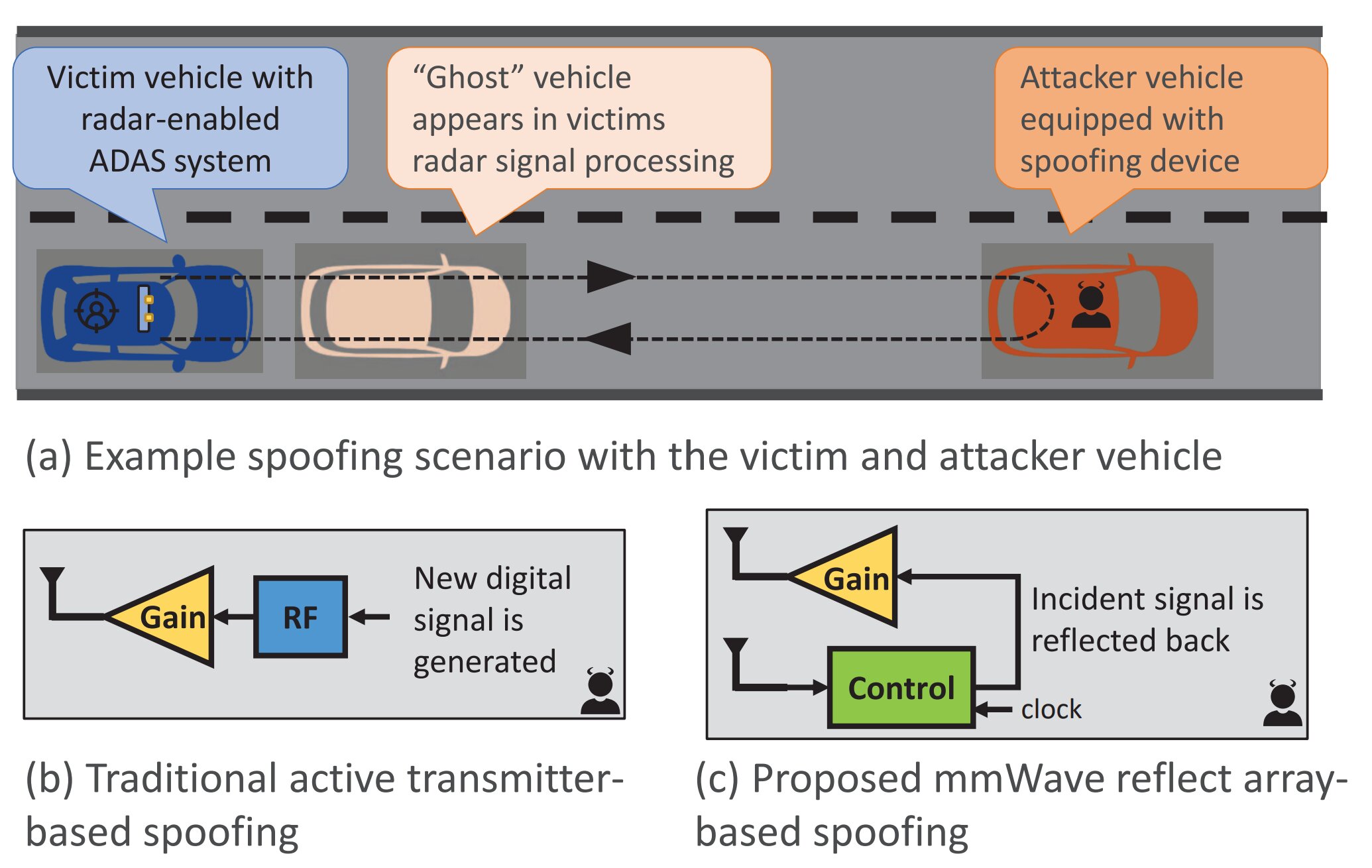Millimeter wave (mmWave) radio frequencies are widely used in modern cars and autonomous vehicles to enable advanced features such as self-driving and assisted driving. However, the use of these frequencies also exposes these vehicles to potential cyberattacks, which can compromise the safety of passengers and pedestrians. To address this issue, researchers from the lab of Dinesh Bharadia, an affiliate of the UC San Diego Qualcomm Institute (QI) and faculty member in the university’s Jacobs School of Engineering Department of Electrical and Computer Engineering, and colleagues from Northeastern University have developed a novel algorithm called mmSpoof. The algorithm is designed to mimic an attacking device and identify areas for improving the security of autonomous vehicles.
Autonomous vehicle cyberattacks
Autonomous cars use sensors and sensing to provide autonomy, and safety and security rely on achieving high-fidelity sensing information from these sensors. Autonomous vehicles detect obstacles and potential hazards by sending out radio waves and recording their reflections as they bounce off surrounding objects. By measuring the time it takes for the signal to return, as well as changes in its frequency, the car can detect the distance and speed of other vehicles on the road. However, like any wireless system, autonomous cars are vulnerable to cyberattacks. Attackers can engage in “spoofing,” which involves interfering with the vehicle’s return signal to trick it into registering an obstacle in its path. The vehicle may then brake suddenly, increasing the risk of an accident.
mmSpoof algorithm
To address the potential security risks of autonomous vehicles, the researchers developed mmSpoof, an algorithm designed to mimic a spoofing attack. Previous attempts to test cars’ resistance to attacks have had limited feasibility, either assuming that the attacker can synchronize with the victim’s radar signal or assuming that both cars are physically connected by a cable. The new technique developed by the researchers uses the victim vehicle’s radar against itself. By subtly changing the received signal’s parameters at “lightspeed” before reflecting it back, an attacker can disguise their sabotage and make it much harder for the vehicle to filter malicious behavior. All of this can be done “on the go” and in real-time without knowing anything about the victim’s radar.
Implications of mmSpoof
The researchers suggest that to counter this type of attack, researchers seeking to improve the safety of autonomous vehicles can use a high-resolution radar capable of capturing multiple reflections from a car to accurately identify the true reflection. Researchers might also create backup options for radar by incorporating cameras and “light detecting and ranging” (LiDAR), which records the time it takes for a laser pulse to hit an object and return to measure its surroundings, into their defense. Additionally, the team presents mmSpoof as a means of preventing dangerous tailgating. By placing an mmSpoof device on the back of their car, drivers can trick a tailgating car into registering a decelerating car in front of them and activating the brakes.
The development of mmSpoof by researchers from the lab of Dinesh Bharadia, an affiliate of the UC San Diego Qualcomm Institute (QI) and colleagues from Northeastern University, is an important step towards enhancing the safety and security of autonomous vehicles. The algorithm, designed to mimic an attacking device, can identify areas for improvement in autonomous vehicle security and help prevent cyberattacks. Researchers suggest that incorporating backup options for radar, such as cameras and LiDAR, into the defense of autonomous vehicles can also improve their safety. The development of mmSpoof also presents a means of preventing dangerous tailgating, which can increase the risk of accidents.



Leave a Reply